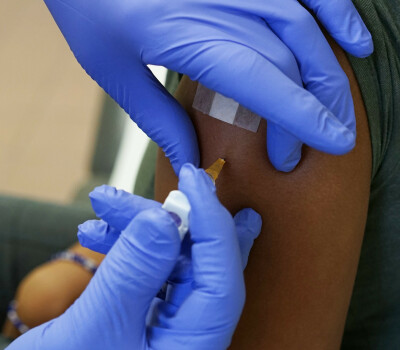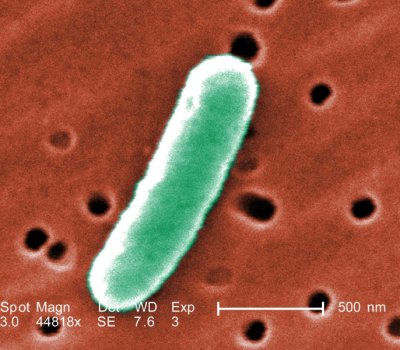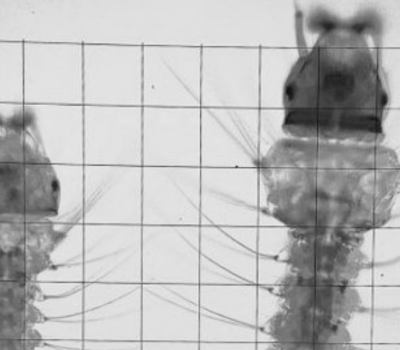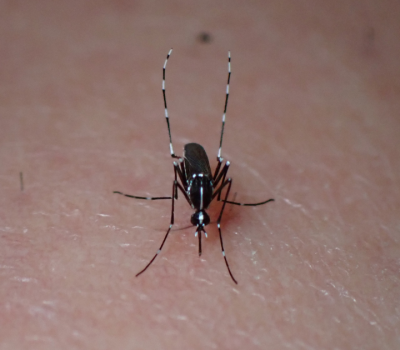Tiger mosquito survives Belgian winter

During the 2023 mosquito season, Sciensano and the Institute of Tropical Medicine ( ITM), with the help of citizens, found the tiger mosquito (Aedes albopictus) in three locations (Lebbeke, Wilrijk and the Wanlin highway car park). Two of the locations, in Lebbeke and Wilrijk, also had tiger mosquitoes last year. This means that the exotic mosquito successfully passed the winter at these locations. The reports of the tiger mosquitoes were made by citizens through the MosquitoSurveillance website. This highlights the importance of citizen contribution. To further enhance citizen participation, Sciensano is launching the 'Mosquito Surveillance' app. With this app, citizens can now easily send in their photos of tiger mosquitoes from anywhere.
Last July, two citizens of the municipalities of Wilrijk and Lebbeke experienced nuisance from mosquitoes during the day and early evening. They took a photo of the tiger mosquito and submitted it via the citizen science website MuggenSurveillance.be. During the same period, tiger mosquitoes were also collected through egg traps set on site specifically for tiger mosquito monitoring. This confirmed the presence and reproduction of tiger mosquitoes at both sites.
According to Isra Deblauwe, entomologist at the Institute of Tropical Medicine, the recent findings are not surprising. "The detection of tiger mosquitoes in the two communities is consistent with the findings last year. Remarkably, both adult mosquitoes and eggs were identified in exactly the same locations. We can safely conclude from this that the tiger mosquito survived the winter in Wilrijk and Lebbeke. That means we are now moving on to a new phase in the invasion process: settlement."
In previous years, tiger mosquitoes entered Belgium through traffic and imports of second-hand car tyres and lucky bamboo. However, there was no evidence yet that they survived the winter. This is the first time that surveillance shows the wintering of the tiger mosquito in Belgium, which, together with the reproduction present, favours the establishment of the tiger mosquito in our country. As Wilrijk and Lebbeke are located in Flanders, the Agency for Nature and Forests (ANB) is currently in charge of implementing the management measures. Following the control campaign in 2022, the ANB is providing three control campaigns this year to eradicate local tiger mosquito populations in Wilrijk and Lebbeke. Two of these campaigns have already taken place and the third is planned for the end of August 2023.
Everyone can help stop the spread of the tiger mosquito. This can be done by avoiding standing water around the home as much as possible. This is because the tiger mosquito lays its eggs just above the water surface against the inner wall of objects with a small amount of standing water, such as flower pots, gutters and rain barrels.
A new app for tiger mosquito surveillance
Citizens' contribution to surveillance is invaluable. Thanks to their help, researchers can quickly identify the presence of these mosquitoes, after which they can be controlled. This delays their establishment in Belgium. To make things easier for citizens, Sciensano developed the 'Mosquito Surveillance' app (available for Android and Apple). It allows citizens to report tiger mosquitoes in a few quick steps by taking photos or charging from their smartphones.
Javiera Rebolledo Romero, epidemiologist at Sciensano says: "These findings clearly show that citizens play an important role and can greatly contribute to tiger mosquito surveillance in Belgium. This not only allows us to detect new introductions, but also to see if a tiger mosquito population is still present from one season to the next. Clearly, the MosquitoSurveillance platform is working, and to further streamline the reporting process, we have developed this app. We invite everyone to download the app and submit photos of the tiger mosquito when you think you have spotted one. Together, our efforts can ensure that the tiger mosquito is properly monitored and controlled."
The MEMO+ project is a collaboration between Sciensano, the Institute of Tropical Medicine and the Barcoding Facility for Organisms and Tissues of Policy Concern (BopCo) for the molecular identification of exotic mosquitoes. This project is funded by the federal and regional governments and the federated entities Environment and Health through the National Environment-Health Action Plan (NEHAP).
Spread the word! Share this story on









